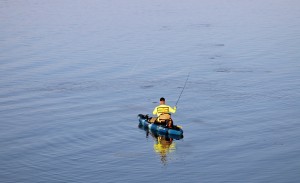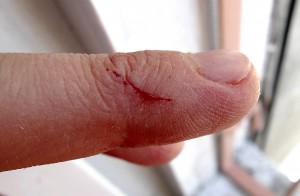With the explosion of kayaking and standup paddleboarding, more people are on the water and potentially being exposed to sometimes life-threatening waterborne illness such as vibrio bacteria (including vibrio vulnificus aka flesh-eating bacteria), mycobacteria, E. coli and other bacteria, viruses and parasites. Its almost enough to scare away even the most seasoned paddler, but with an ounce of prevention a fun, safe day on the water is still possible.
First, let’s look at the most obvious causes of exposure; cuts. The majority of cuts occur on the hands and feet, usually from stepping on something or a puncture (i.e., fishhook, etc.) Feet can be rather well protected by wearing water shoes or neoprene foot gear. Neoprene gloves are also available, but as most fisherman will agree, it makes working with a hook, lure or string next to impossible. There are finger or paddling gloves that leave the fingertips exposed while still offering protection for the rest of the hand that may make an acceptable tradeoff.
Protective gear is one solution, but what if a cut or scrape occurs elsewhere. The first course of action is to clean the wound with a wound cleanser containing an antiseptic. Alternatives are saline, hydrogen peroxide and iodine. Once the wound is clean, it needs to be dressed, preferably with a waterproof bandage, liquid bandage or gel bandage. The Band-Aid brand Active-Flex or Advanced Healing Blister Bandages are excellent for small cuts and blisters and hold up well against the elements
 If the wound is a deep puncture or something more serious, the reasonable course of action will be to get professional medical help as quickly as possible. The longer the delay, the more risk of infection and potential side effects. Clean the exterior portion of the wound, cover it and seek medical attention.
If the wound is a deep puncture or something more serious, the reasonable course of action will be to get professional medical help as quickly as possible. The longer the delay, the more risk of infection and potential side effects. Clean the exterior portion of the wound, cover it and seek medical attention.
If you know you have a cut or scrape before heading out on the water, protect it in advance with one of the waterproof or gel bandages. It’s also a good idea to make sure your first aid kit is complete and contains an antiseptic spray or gel and the appropriate wound dressings. Pay attention to local water quality advisories and plan your trip accordingly. Ultimately, use your best judgment and stay safe on the water.



